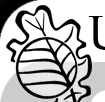A sweet coconutty, pineappley, slightly resinous-carroty
mango is magnificent, mangosteens are ethereally delicious, Hawaiian
papayas and juicy, old-fashioned, Pacific Northwestern peaches are awfully
good, and blackberries are hard to beat, but my favorite of all fruits
is the red raspberry. The scientific name of the raspberry, Rubus idaeus, means the rubus of Mt. Ida, in Greece, but the species occurs naturally in cool temperate regions of North America as well
as Eurasia. In British Columbia the native plants are Rubus idaeus L. subsp. melanolasius (Dieck) Focke, and they are found in open
forests and fields in the lowlands and montane zones, mostly in and
east of the Cascade and Coast Mountains. Where I've seen wild raspberries
most abundantly is in Wells Gray Provincial Park. The wild fruits are
very good, but quite small. (Although I've seen expensive cultivated
ones in supermarkets imported from California and Chile that aren't
any bigger.) |

Raspberry, Rubus idaeus
Juhanson, used under GNU Free Documentation License
|
Raspberry cultivars (cultivated varieties grown
in gardens or commercially) have been bred from European plants or hybrids
of European and North American plants. Cultivated raspberries are an important
local crop. The Fraser Valley of British Columbia, east of Vancouver,
currently produces more raspberries than any other place on earth, although
in some years Whatcom County, Washington, just across the border, produces
more. A few years ago Yugoslavia was the largest producer, but the balkanizing
wars of that region have taken their toll on raspberries as well as people.
Not only is British Columbia a leading producer
of raspberries, but the biggest and best raspberries have been bred right
here for our climatic conditions. Raspberry breeders have bred for large
size, resistance to disease, spatially separated berries so that when
one gets moldy it doesn't spread to all the others, and many other things,
but less so for flavor. So it is partly fortuitous that the best tasting
berries are also the largest. The two biggest and best tasting cultivars
are 'Tulameen' and 'Chilliwack'. Both were bred By Dr. Hugh Daubeny at
the Agriculture Canada Field Station in the Fraser Valley at Abbotsford,
B. C. 'Chilcotin' is as big, but it is nearly tasteless. Or as the garden
catalogs say, it has a sweet, mild flavor. Sweet, mild flavor is a horticultural
and gastronomic euphemism for tasteless. (As in Asian pears have a sweet,
mild flavor and an interesting mouth-feel like wet sand.)
Tulameen and Chilliwack produce berries 3-4.5 cm
long. Both are sweet, ripe when bright red rather than dark or purplish
red, have good sugar-acid balance, and a pure, strong raspberry flavor.
I think Tulameen is better. Dr. Kennedy, Curator of Vascular Plants, thought
Chilliwack was better the first time we had a comparative tasting of raspberry
cultivars and experimental crosses at Abbotsford, but she thought Tulameen
was better the next year. Yes, to us raspberry connoisseurs, flavor varies
from year to year, as it is affected by weather and growing conditions,
just like vintages of wine grapes. Chilliwack has a short main fruiting
season of about 3 weeks. It is better for large scale growers and processors
who want to harvest the entire crop in a short time. Tulameen has a fruiting
season about twice as long, so it is better for home gardeners who want
fresh berries for a longer time. Chilliwack is being planted commercially
in Chile, where they like it because they pronounce it Chile-wack.
I cringe when I read famous garden columnists in
local newspapers recommending antique cultivars like 'Willamette' for
home gardeners. Willamette was bred in Oregon and released the year I
was born, more than a half century ago. It was considered a big but sour
berry when I was a kid slaving away 10 hours a day in the hot sun in the
berry fields of the Puyallup Valley, Washington. But now its size is average,
its flavor is average, and it is quite sour. Actually I didn't get to
pick Willamettes when I was a kid. The farm I picked at grew New Washingtons,
which were smaller, and harder to pick, but sweeter. Back then farmers
got more money from the freezing plants for New Washingtons because they
required less sugar, and back then sugar cost more per pound than raspberries!
Darn, I'm old. Actually, when I started my garden 13 years ago I did plant
Willamettes, but after I tasted a Tulameen, I threw them all out and replaced
them with Tulameens. |
 Salmonberry, Rubus spectabilis Salmonberry, Rubus spectabilis
Photo © Derek Tan |
Tulameens and Chilliwacks grown in the Fraser Valley
of B. C. are the best raspberries in the world. That doesn't necessarily
mean that they will be as good when grown in other regions, or even that
they will grow satisfactorily in other, colder, regions. And it doesn't
mean that they should replace all older cultivars. Fall fruiting cultivars
like 'Heritage' extend the raspberry season significantly, although the
berries are small and not very juicy.
Rarely, golden fruited mutants of red raspberries
may be found in the wild. Several golden fruited cultivars have been bred
and are sold to home gardeners who want something different. In my opinion
all have a sweet, mild flavor and aren't worth eating. And they wouldn't
work in Death by Chocolate*. In the closely
related salmonberry, Rubus spectabilis, which is the most
common shrub around Vancouver, golden and red fruited plants are about
equally common. No one knows why.
The raspberry has about the smallest and least
conspicuous flowers of any of our species of Rubus, but who cares,
you don't eat the flowers. The flowers do produce abundant nectar and
honeybees and bumblebees love them.
*Death by
Chocolate: Splash raspberry sauce (pureed raspberries and sugar)
across a large plate (so it looks like splattered blood). Top with a large
slice of chocolate pāte or chocolate truffle. |







